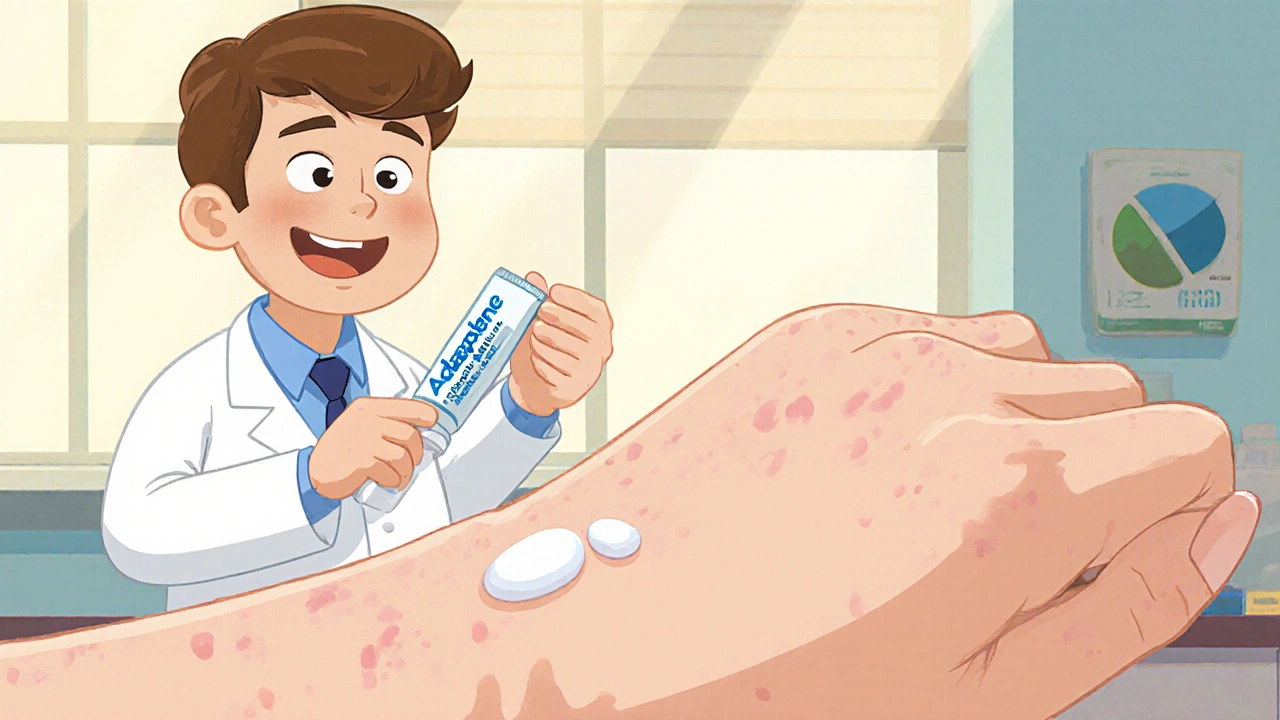When exploring retinoid, a family of vitamin A‑derived compounds that regulate skin cell turnover and inflammation. Also known as vitamin A derivative, it plays a central role in dermatology, acne therapy, and anti‑aging regimens. This class of molecules ranges from over‑the‑counter creams to prescription‑only oral pills, and each version targets the skin in a slightly different way. Understanding those differences helps you match the right product to your skin concerns without unnecessary trial and error.
One of the most common reasons people encounter retinoids is to treat acne, a condition marked by clogged pores, excess oil, and inflammation. The severity of acne often determines which retinoid formulation is appropriate: mild breakouts respond well to topical tretinoin or adapalene, while moderate to severe cases may need oral isotretinoin. In short, acne severity influences retinoid choice, and a dermatologist’s assessment is usually the first step.
Topical retinoids include tretinoin, adapalene, and retinaldehyde. They work by speeding up the shedding of dead skin cells, keeping pores clear, and reducing inflammation. Most users notice smoother texture within a few weeks, but the trade‑off is often dryness, peeling, and heightened sun sensitivity. To counter these effects, start with a low concentration, apply every other night, and follow up with a gentle moisturizer and broad‑spectrum sunscreen.
Oral isotretinoin, a powerful retinoid taken in capsule form to treat severe cystic acne is a different animal. It targets the root causes of acne by shrinking sebaceous glands, reducing oil production, and normalizing skin cell turnover throughout the body. Because isotretinoin affects the entire skin ecosystem, it requires careful monitoring of liver function and lipid levels, as well as strict contraception for anyone who can become pregnant. Here, retinoid requires dermatologist supervision to balance effectiveness with safety.
Beyond acne, retinoids are popular in anti‑aging skin care. Tretinoin and retinol creams help fade fine lines, improve skin tone, and stimulate collagen production. The same mechanisms that clear pores also repair photodamage, which is why many people incorporate a low‑dose retinol into their nightly routine once their skin has built tolerance.
Even though the benefits are impressive, retinoids aren’t for everyone. People with extremely sensitive skin, eczema, or rosacea may experience intensified irritation. Pregnant or breastfeeding individuals must avoid systemic retinoids altogether because of the risk of birth defects. When in doubt, a quick chat with a dermatologist can clarify whether a milder alternative, such as azelaic acid, might be a safer bet.
Applying a retinoid correctly can make the difference between a breakout of irritation and a steady, visible improvement. A typical routine looks like this: cleanse with a gentle, non‑striated cleanser, pat dry, wait a minute for the skin to dry completely, then apply a pea‑sized amount of the retinoid to the forehead, cheeks, chin, and nose. Follow with a moisturizer that contains ceramides or hyaluronic acid to restore the skin barrier.
Because retinoids increase the skin’s reaction to UV light, sunscreen isn’t optional—it’s essential. Choose a mineral‑based sunscreen with at least SPF 30 and reapply every two hours when outdoors. This simple step dramatically reduces the risk of sunburn and long‑term pigment changes, which are common complaints among new users.
When considering a new retinoid product, look for a clear concentration list on the label. Over‑the‑counter options usually sit between 0.025% and 0.1% for tretinoin, while prescription strengths can go up to 0.5% or higher. For oral isotretinoin, the usual dose ranges from 0.5 mg/kg to 1 mg/kg per day, adjusted based on response and side‑effect profile.
To sum up, retinoids are versatile tools that can tackle acne, signs of aging, and even certain skin disorders. They work by modulating cell turnover, reducing inflammation, and enhancing collagen synthesis. The key to success lies in choosing the right formulation, starting low, staying consistent, and protecting the skin from sun exposure. Whether you’re battling stubborn breakouts or aiming for smoother, younger‑looking skin, the right retinoid can be a game‑changer when used responsibly.
Below you’ll find a curated selection of articles that dive deeper into specific retinoid topics—from detailed comparisons of topical versus oral options to practical tips for minimizing side effects and maximizing results. Browse through the list to find the guidance that matches your current skin goals.

Explore how Adapalene works at the cellular level, its clinical benefits, and practical tips for safe, effective acne treatment.